Navy EOD is more than a rating, it is a community.
EOD is a group of highly trained Sailors who are responsible for the safe disarmament and disposal of explosives.
They are prepared to handle and dispose of most all types of explosives, whether they be homemade or professionally constructed.
Jump To A Section
Who Can Be An EOD?
Training And Qualifications
What’s Life Like As An EOD?
Salary
Civilian Career Opportunities
Navy EOD can also be called upon to dispose of specialized types of ordnance, such as chemical, biological, and nuclear weapons, whether they are on land, sea, or in the air.
This group of dedicated men and women are an integral part of America’s Special Forces community whose role in the military’s mission has been a pivotal piece of the greater war-fighting picture since the beginning of World War II.
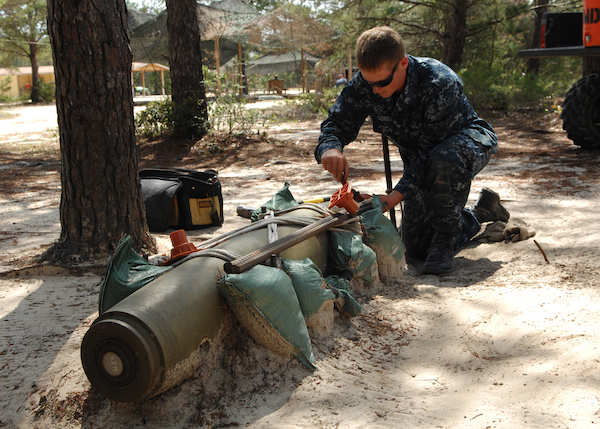
Who Can Be Navy EOD?
It is no secret that any part of our military’s Special Forces is not an easy group to join.
There are very strict guidelines for admission, with requirement waivers rarely being granted.
The following are the minimum requirements you will have to meet, in order for you to be eligible to apply to the Explosive Ordnance Disposal program:
- 20/200 bilateral eyesight that is correctable to least 20/25
- Applicant cannot be colorblind
- ASVAB AR and VE line scores combined, must be at least 109, MC score of 51, or a combined GS, MC, and EI score of 169
- Not older than the age of 30
- Must be a U.S. Citizen
- Must be capable of obtaining and maintaining a security clearance
- Cannot have any significant medical conditions that render applicant unable to meet requirements outlined in NAVMED P-117 (ask your recruiter for details)
- Pass a physical and separate medical examination required for divers
- Meet the Navy PRT Test standards
In addition to meeting the above requirements, you will have to participate in a Navy Physical Screening Test (PST).
Related Article – Navy Information Systems Technician: Career Details
The following are the minimum scores necessary to pass the screening test:
- Begin by swimming 500 yards using either the sidestroke, or breaststroke, within 12 minutes 30 seconds
- 10-minute rest
- 2-minutes to complete at least 50 push-ups
- 2-minute rest
- 2-minutes to complete at least 50 sit-ups
- 2-minute rest
- Complete 6 pull-ups under no time limit
- 10-minute rest
- Finally, you will have 12 minutes and 30 seconds to complete a 1.5-mile run
It is important to remember that the physical requirements for the EOD program training, as well as the ongoing occupational responsibilities, are extremely taxing.
The above standards are the MINIMUM requirements, but you are expected to EXCEED the minimum requirements when applying.
Those who wish only to accomplish the minimum, need not apply.
Males and females who meet the above requirements are eligible to enlist under the Navy EOD program.
No college degree is required to enlist as a Navy EOD Technician, but a bachelor’s degree will be required to consider commissioning as a Navy EOD Officer.
EOD Training and Qualifications
Meeting the application requirements is the easiest part of what lies ahead for you as a Navy EOD Technician.
Just like with the Air Force EOD program, the training is both extensive and rigorous, not just physically, but mentally as well.
It is intended to weed out the best of the best, and then prepare that small group for their lives as Navy EOD Techs.
You can expect to be in the Navy and training for more than a year before becoming a rated Explosive Ordnance Disposal Technician.
Your training will begin in Navy boot camp at Navy Recruit Training Command in Great Lakes, Illinois.
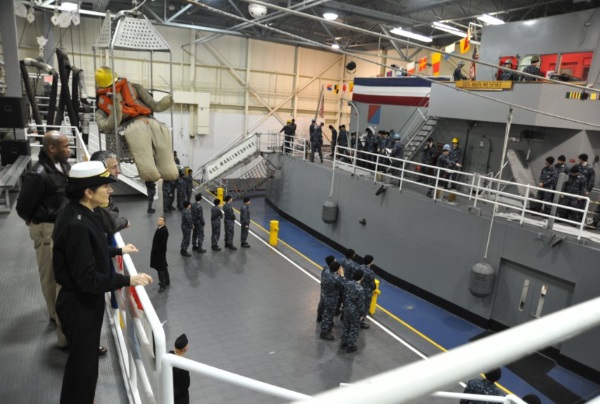
Here, you will be placed in a specialized Recruit Training Division for entrants into the Navy Special Warfare ratings.
In these divisions Recruits will be exposed to a more rigorous Physical Training (PT) schedule than the average Navy Recruit at boot camp would be.
Pending extenuating circumstances, Navy Recruit Training lasts 8 weeks.
Related Article – Is Navy Boot Camp Hard?
Upon graduation of Navy Recruit Training, you will attend the Explosive Ordnance Disposal Preparatory Course of Instruction “across the street” from the Recruit Training Command, at Training Support Center Great Lakes.
Here, you will lay the groundwork that the rest of your EOD training is going to build off of.
In this course, you will work on your long-range swimming capabilities, and receive training on how to perfect your swim stroke.
You will also begin to experience a more rigorous physical conditioning program to prepare you for your future training.
This training cycle will last for a total of 3 weeks and will be the first point at which candidates will begin dropping from the program.
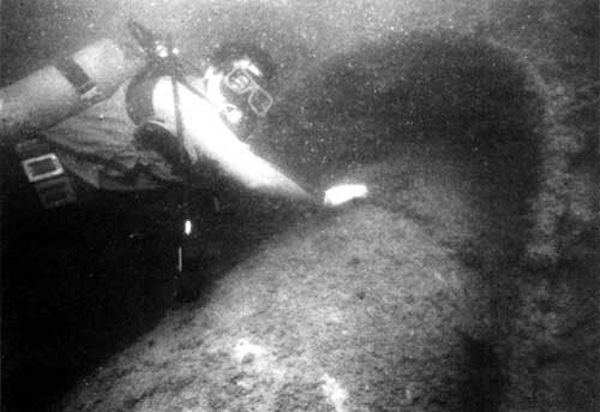
Once you have completed the EOD Prep course, you will attend 9 weeks of Diver Training at the Naval Diving and Salvage Training Center (NDSTC) in Panama City, Florida.
During your time at NDSTC, you will learn concepts of diving and diving equipment, how to properly operate and maintain diving equipment, and of course, how to properly dive under the water.
In this course, you will learn to be comfortable and confident under the water.
The next step in the Navy EOD training pipeline is the Explosive Ordnance Disposal A School located at Eglin Air Force Base in Fort Walton Beach, Florida.
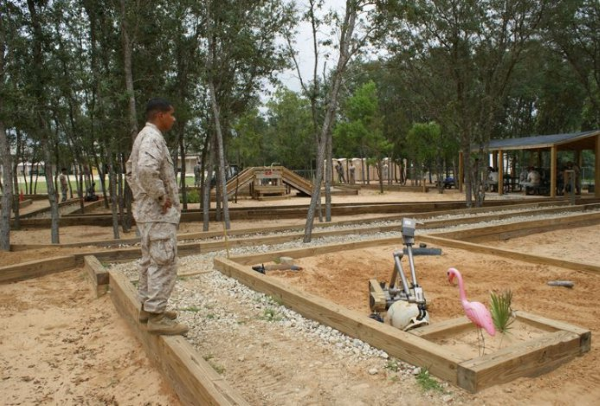
This 42-week course will teach you to disarm, or “make safe”, the different types of explosive ordnance you may come across.
The course is split into four separate sections, each covering a different part of the EOD Technician specialty:
- In the Air Ordnance Division your training will focus on disarming different types of bombs and missiles
- In the Improvised Explosive Devices (IEDs) portion, you will be taught how to work with homemade bombs
- The Underwater Ordnance Division will of course teach the skills necessary to disarm underwater explosives, such as torpedoes and mines. This course will also teach you the vital skill of underwater search techniques.
- Nuclear Ordnance Division is going to introduce you to basic nuclear physics, as well as procedures for working with nuclear material, including radiation monitoring and decontamination.
After you have completed EOD School, you will head to Fort Benning, Georgia, where you will attend the Basic Airborne Training School, also known as Jump School.
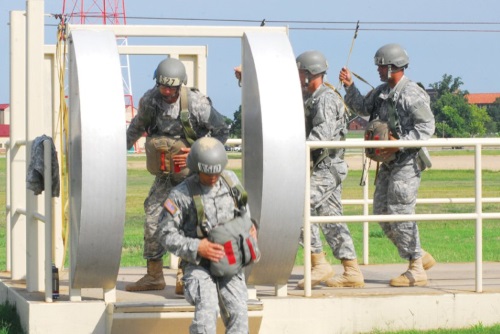
Here, you will attend 3 weeks of training, where you will certify as a basic parachutist.
Finally, after completing jump school, you will begin the final leg of your journey to earn the Navy EOD Technician rating, in Coronado, California.
Over the course of the 3-week Explosive Ordnance Disposal Tactical Training Course, you will learn important skills such as:
- Fast-rope
- Rappelling
- Special patrol insertion
- Extraction rigging
- Small arms training (M9, M16, Mossberg 500)
- Weapons training (.50 Caliber, M240)
- Small unit weapons tactics
- Self-defense
- Land navigation
- Patrolling
- Satellite and High Frequency tactical communication
Upon completion of the EOD training pipeline, you will officially be assigned the M02A Navy Enlisted Code (NEC) designating you as a Basic Explosive Ordnance Disposal Technician.
After 63 weeks of training, you can now proudly call yourself a Navy EOD Technician.
The training doesn’t stop here of course. Nay EOD Techs are able, and are encouraged, to take advantage of advanced training opportunities to earn specialized skills.
Advanced training opportunities available to Navy EOD include:
- Helicopter insertion
- Parachute water insertion
- Advanced Improvised Explosive Device Disposal (AIEDD)
- Jumpmaster
- Small Unit Tactics instructor
- Small Arms Instructor (SAMI)
- Foreign language school at the Defense Language Institute
- EOD Communications
Any EOD Technician who earns their bachelor’s degree, is eligible to apply for a commission as a Navy EOD Officer.
Life as Navy EOD
Once training is complete, and you are officially a rated Explosive Ordnance Disposal Technician, you will be assigned to an EOD Mobile Unit.
Here you will receive on the job training, and valuable experience in your new career.
Mobile Units can be deployed anywhere in the world, and are often attached to Naval Special Warfare Companies, Carrier/Expeditionary Strike Groups, and Marine Expeditionary Units (MEU).
Once you arrive at your Mobile Unit, you will find yourself doing any number of tasks.
Depending on your units assignment, some of the tasks you will be completing day-to-day may include:
- Detonating and demolishing hazardous or outdated explosives
- Conducting underwater searches at ports of entry to ensure safe arrival for ships throughout the fleet
- Responding to bomb threats in support to Navy, and local law enforcement agencies
- Training with, and utilizing robotic technology to diffuse dangerous ordnance
- Disposing of discovered unexploded underwater ordnance
- Assisting the U.S. Secret Service in support of Presidential and Vice Presidential protection details during official visits
- Assisting local law enforcement agencies during large events
During your time as a Navy EOD Technician, you will work side by side with Navy SEALS, Army Rangers, Air Force PJs, and other Special Forces units of the United States and foreign militaries.
You will have the opportunity to achieve the designations of Senior, and Master EOD Technician.
These opportunities will come as you advance to higher paygrades and earn experience throughout your career.
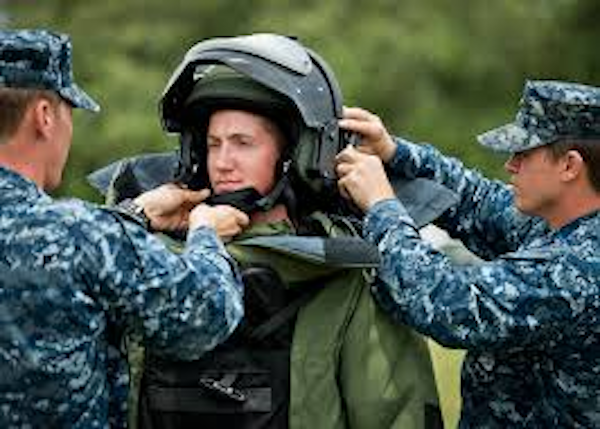
Pay and Compensation
Your pay is going to be based on a combination of your rank and time in service.
Once you become a rated EOD Technician, you will be automatically advanced to the paygrade of E-4.
This means your base starting yearly salary will be $27,684 as an E-4 over two, and max out at $89,698 as an E-9 with 30 years of service.
Related Article: Navy Enlisted And Officer Ranks And Pay
This does not include Basic Allowance for Housing (BAH), or Basic Allowance for Sustenance (BAS).
Check out our BAH Calculator here.
Unique to the EOD rating, like all Navy Special Warfare ratings, are the special pay opportunities that come along with the job.
There is Dive Pay ($215 a month), “Jump Pay” ($225 a month), and Demolition Duty pay ($150 a month).
This brings the salary range to $34,764 – $96,778.
On top of your guaranteed monthly pay, you may also be eligible for up to $36,000 in reenlistment bonuses.
Again, this does not factor in your BAH, or BAS allowances.
BAH alone can range from $7,452 to $62,748 a year depending on your rank, marital status, and where you live.
Civilian Opportunities
There is a plethora of skills you will learn during your career in Navy EOD.
On top of all the specialized explosives skills you will perfect, you will also learn important skills such as leadership, teamwork, and how to work under severe pressure.
All of which will put you in a position to succeed during your military transition.
There are a vast number of career opportunities available to Navy EOD Technicians after their service:
- EOD Weapons Engineer
- Unexploded Ordnance (UXO) Technician
- Military, or military contractor EOD Technician
- EOD Technical Trainer
- Law Enforcement Officer with local law enforcement, FBI, DEA, CBP, and ATF

Additionally, many Special Forces veterans find employment in areas not directly related to their military specialties, such as:
- Managers
- Executives
- Teachers
- Motivational Speakers
- Authors
- Personal Trainers
- Non-profit Employees
None of these jobs sound good to you?
That’s ok, you can always go back to school!
Aside from the many credentialing opportunities EOD Technicians have available to them through their training, they also receive numerous college credits that can be put toward a degree of their choice.
These credits can be combined with Active Duty Tuition Assistance and the GI Bill to help them get the college degree they want for little, or no cost.
Conclusion
Navy EOD is not for the faint of heart.
It takes an immeasurable level of determination to make it through the training, and a substantial amount of courage to do the job.
These are the men and women who not only put their lives on the line by joining the World’s Finest Navy, but they volunteer to endanger themselves even further to protect their Shipmates and Marines by disposing of the dangerous explosives that threaten their safety.
Navy EOD Technicians are proud of their accomplishments, and they’re not afraid to step up to the plate when no one else will.
Their commitment to exceed expectations drives them to continually accomplish goals none thought possible.
Navy EOD Technicians serve everywhere.
One day they may jump out of a plane, the next they could be underwater disarming an unexploded mine from World War II.
They work hand-in-hand with Special Forces all over the world, as well as local law enforcement agencies, to ensure the safety of Americans everywhere.
If the idea of this rating excites you, and you think you have what it takes to be one of the chosen few who can call themselves Navy EOD Technicians, then talk to your recruiter and ask them when you can begin your journey.
Keep yourself motivated, and always remember why you chose this line of work.
- Navy Promotion Timeline for Enlisted & Officers - June 19, 2024
- Navy SEAL Training (BUD/S) - June 19, 2024
- Navy Aircraft Carrier Flight Deck Shirt Colors Explained - June 19, 2024
Originally posted on June 17, 2019 @ 2:53 am
Affiliate Disclosure: This post may contain affiliate links. If you click and purchase, I may receive a small commission at no extra cost to you. I only recommend products I have personally vetted. Learn more.